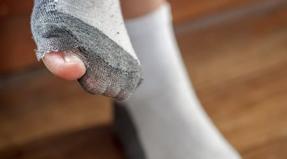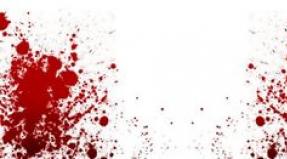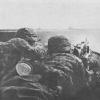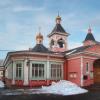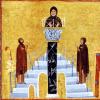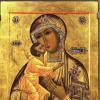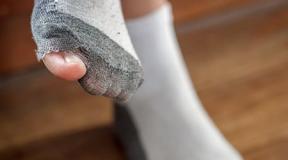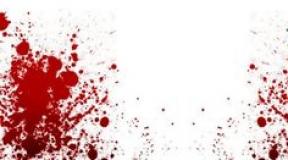Titles in the Russian Orthodox Church. Spiritual orders and ranks Orders of clergy in Orthodoxy
The emergence of Christianity is associated with the coming to earth of the son of God - Jesus Christ. He miraculously became incarnate from the Holy Spirit and the Virgin Mary, grew and matured as a man. At the age of 33, he went to preach in Palestine, called twelve disciples, performed miracles, denounced the Pharisees and Jewish high priests.
He was arrested, tried and shamefully executed by crucifixion. On the third day he rose again and appeared to his disciples. On the 50th day after the resurrection, he was ascended to God’s chambers to his Father.
Christian worldview and dogmas
The Christian Church was formed more than 2 thousand years ago. The exact time of its beginning is difficult to determine, since the events of its occurrence do not have documented official sources. Research on this issue is based on the books of the New Testament. According to these texts, the church arose after the descent of the Holy Spirit on the apostles (Feast of Pentecost) and the beginning of their preaching of the word of God among people.
The emergence of the apostolic church
The apostles, after gaining the ability to understand and speak all languages, went around the world preaching a new teaching based on love. This teaching was based on the Jewish tradition of worshiping one God, the foundations of which are set out in the books of the prophet Moses (the Pentateuch of Moses) - the Torah. The new faith proposed the concept of the Trinity, which distinguished three hypostases in the one God:

The main difference between Christianity was the priority of God's love over the law, while the law itself was not abolished, but supplemented.
Development and dissemination of the doctrine
The preachers followed from village to village; after their departure, the emerging adherents united into communities and led the recommended way of life, ignoring the old principles that contradict the new dogmas. Many officials of that time did not accept the emerging doctrine, which limited their influence and called into question many established positions. Persecution began, many followers of Christ were tortured and executed, but this only strengthened the spirit of Christians and expanded their ranks.
By the fourth century, communities had grown throughout the Mediterranean and even spread widely beyond its borders. The Emperor of Byzantium, Constantine, imbued with the depth of the new teaching and began to establish it within the boundaries of his empire. Three saints: Basil the Great, Gregory the Theologian and John Chrysostom, enlightened by the Holy Spirit, developed and structurally presented the teaching, approving the order of services, the formulation of dogmas and the canonicity of sources. The hierarchical structure is strengthened, and several local Churches emerge.
 The further development of Christianity occurs rapidly and over vast areas, but at the same time two traditions of worship and dogma arise. They each develop along their own path, and in 1054 the final split occurs into Catholics who professed the Western tradition, and Orthodox supporters of the Eastern tradition. Mutual claims and accusations lead to the impossibility of mutual liturgical and spiritual communication. The Catholic Church considers the Pope to be its head. The Eastern Church includes several patriarchates formed at different times.
The further development of Christianity occurs rapidly and over vast areas, but at the same time two traditions of worship and dogma arise. They each develop along their own path, and in 1054 the final split occurs into Catholics who professed the Western tradition, and Orthodox supporters of the Eastern tradition. Mutual claims and accusations lead to the impossibility of mutual liturgical and spiritual communication. The Catholic Church considers the Pope to be its head. The Eastern Church includes several patriarchates formed at different times.
Orthodox communities with patriarchal status
At the head of every patriarchy is a patriarch. Patriarchates may include Autocephalous Churches, Exarchates, Metropolises and Dioceses. The table lists modern churches that profess Orthodoxy and have the status of patriarchy:
- Constantinople, founded by the Apostle Andrew in 38. Since 451 it receives the status of Patriarchate.
- Alexandria. It is believed that its founder was the Apostle Mark around the year 42; in 451, the ruling bishop received the title of patriarch.
- Antioch. Founded in the 30s AD. e. the apostles Paul and Peter.
- Jerusalem. Tradition claims that at first (in the 60s) it was headed by relatives of Joseph and Mary.
- Russian. Formed in 988, an autocephalous metropolitanate since 1448, a patriarchate introduced in 1589.
- Georgian Orthodox Church.
- Serbian. Receives autocephaly in 1219
- Romanian. Since 1885 it officially receives autocephaly.
- Bulgarian. In 870 it achieved autonomy. But only in 1953 was it recognized by the patriarchy.
- Cyprus. Founded in 47 by the apostles Paul and Barnabas. Receives autocephaly in 431.
- Hellas. Autocephaly was achieved in 1850.
- Polish and Albanian Orthodox Churches. Gained autonomy in 1921 and 1926, respectively.
- Czechoslovakian. The baptism of the Czechs began in the 10th century, but only in 1951 did they receive autocephaly from the Moscow Patriarchate.
- Orthodox Church in America. It was recognized in 1998 by the Church of Constantinople and is considered the last Orthodox Church to receive patriarchy.
 The head of the Orthodox Church is Jesus Christ. It is governed by its primate, the patriarch, and consists of church members, people who profess the teachings of the church, have undergone the sacrament of baptism, and regularly participate in divine services and sacraments. All people who consider themselves members are represented by the hierarchy in the Orthodox Church, the scheme of their division includes three communities - laity, clergy and clergy:
The head of the Orthodox Church is Jesus Christ. It is governed by its primate, the patriarch, and consists of church members, people who profess the teachings of the church, have undergone the sacrament of baptism, and regularly participate in divine services and sacraments. All people who consider themselves members are represented by the hierarchy in the Orthodox Church, the scheme of their division includes three communities - laity, clergy and clergy:
- The laity are members of the church who attend services and take part in the sacraments performed by the clergy.
- Clergymen are pious laymen who perform the obedience of clergy. They ensure the established functioning of church life. With their help, the cleaning, protection and decoration of churches (workers), provision of external conditions for the order of divine services and sacraments (readers, sextons, altar servers, subdeacons), economic activities of the church (treasurers, elders), as well as missionary and educational work (teachers, catechists) are carried out and educators).
- Priests or clergy are divided into white and black clergy and include all church orders: deacons, priesthood and bishops.
The white clergy includes clergy who have undergone the sacrament of ordination, but have not taken monastic vows. Among the lower ranks, there are such titles as deacon and protodeacon, who have received grace to perform the required actions and help conduct the service.
The next rank is presbyter, they have the right to perform most of the sacraments accepted in the church, their ranks in the Orthodox Church in ascending order: priest, archpriest and the highest - mitred archpriest. People call them priests, priests or priests; their duties include being rectors of churches, heading parishes and associations of parishes (deaneries).
 The black clergy includes members of the church who have taken monastic vows that limit the freedom of the monk. The tonsure into the ryassophore, the mantle and the schema are consistently distinguished. Monks usually live in a monastery. At the same time, the monk is given a new name. A monk who has been ordained as a deacon is transferred to hierodeacon; he is deprived of the opportunity to perform almost all the sacraments of the church.
The black clergy includes members of the church who have taken monastic vows that limit the freedom of the monk. The tonsure into the ryassophore, the mantle and the schema are consistently distinguished. Monks usually live in a monastery. At the same time, the monk is given a new name. A monk who has been ordained as a deacon is transferred to hierodeacon; he is deprived of the opportunity to perform almost all the sacraments of the church.
After priestly ordination (performed only by a bishop, just as in the case of the ordination of a priest), the monk is given the rank of hieromonk, the right to perform many sacraments, to head parishes and deaneries. The following ranks in monasticism are called abbot and archimandrite or holy archimandrite. Wearing them presupposes occupying the position of senior leader of the monastery brethren and the monastery's economy.
The next hierarchical community is called the episcopate, it is formed only from the black clergy. In addition to bishops, archbishops and metropolitans are distinguished by seniority. The ordination of a bishop is called consecration and is carried out by a college of bishops. It is from this community that the leaders of dioceses, metropolises, and exarchates are appointed. It is customary for people to address the leaders of dioceses as bishop or bishop.
These are the signs that distinguish church members from other citizens.
There are three degrees of priesthood in the Orthodox Church: deacons; elders(or priests, priests); bishops(or bishops).
The clergy in the Orthodox Church is divided into white(married) and black(monastic). Sometimes, as an exception, persons who are not married and have not taken monastic vows are ordained to the priesthood; they are called celibates. According to the canons of the Church, only monastics.
Deacon translated from Greek means minister. This is a clergyman of the first (junior) degree. He is a co-servant with priests and bishops during the celebration of the Sacraments and other sacred rites, but does not perform any divine services independently. The senior deacon is called protodeacon.
The deacon is ordained (ordained) by the bishop during the celebration of the liturgy.

During the service the deacon is dressed in surplice(long clothes with wide sleeves). A long wide ribbon called orari. When pronouncing the litanies, the deacon holds the orarion with his right hand, raising it upward as a sign that our prayer should ascend upward to God. The orarion also symbolizes angelic wings, for, according to the interpretation of St. John Chrysostom, deacons represent the image of angelic service in the Church. The deacon puts on his hands instruct- sleeves covering the wrists.
Priest (presbyter)- second degree of priesthood. He can perform all the Sacraments except the Sacrament ordination. Priests are ordained only after ordination to the diaconate. The priest is not only the performer of sacred rites, but also a shepherd, spiritual leader and teacher for his parishioners. He preaches, teaches and instructs his flock.

To serve the liturgy, the priest dresses in special clothes. Podryznik- a long shirt that resembles a surplice. The white color of the cassock symbolically indicates the purity of life and the spiritual joy of serving the liturgy. Stole is a symbol of the priest's grace. Therefore, without it, the priest does not perform a single sacred rite. The epitrachelion has the appearance of an orarion folded in half. This means that a priest has greater grace than a deacon. The epitrachelion depicts six crosses - according to the number of six Sacraments that he can perform. The seventh Sacrament—ordination—can only be performed by a bishop.
The priest puts on the epitrachelion belt- as a sign of your readiness to always serve God. How can a priest receive a reward for services to the Church? legguard And club(symbol of the spiritual sword that crushes all evil).
Like the deacon, the priest puts on instruct. They symbolize the bonds by which Jesus Christ was bound. Over all other vestments, the priest puts on felonion, or chasuble. It is a long, wide garment with a cutout for the head and a large opening at the front, reminiscent of a cape. The phelonion symbolizes the scarlet robe of the suffering Savior, and the ribbons sewn on it represent the streams of blood that flowed through His clothes.
Over the chasuble the priest puts on confidant(i.e. chest) cross.
Priests may be awarded for special merits kamilavka- a cylindrical velvet headdress. As a reward, the priest may be given a yellow four-pointed cross instead of a white eight-pointed cross. A priest can also be awarded the degree of archpriest. Some especially honored archpriests are given a cross with decorations and a miter - a special headdress with icons and decorations - as a reward.
Bishop- third, highest degree of priesthood. The bishop can perform all the Sacraments and sacred rites. Bishops are also called bishops And saints(holy bishops). Also called bishop lord.
Bishops have their own degrees. Senior bishops are called archbishops, followed by metropolitans. The most senior bishop - the head, primate of the Church - has the title of patriarch.
A bishop, according to church rules, is ordained by several bishops.

The bishop dresses in all the vestments of a priest, only instead of a phelonion he puts on a sakkos, a garment resembling a short surplice. The main sign of episcopal power is put on him - omophorion. It is a wide ribbon lying on the shoulders - it symbolizes that lost sheep that the Shepherd Christ found and took on His ramen (shoulders).
Worn on the bishop's head miter, it simultaneously depicts the royal crown and the Savior’s crown of thorns.
On his vestments, the bishop, together with the cross, wears the image of the Mother of God, called Panagia(translated from Greek All Holy). In his hands, as a sign of hierarchal authority, the bishop holds a rod or staff. They place it under the feet of the bishop during divine services. Orlets— round rugs with the image of an eagle.
Outside of worship, all clergy wear cassock(lower long clothes with narrow sleeves) and cassock(outerwear with wide sleeves). Priests usually wear skufyu(pointed cap) or kamilavka. Deacons most often wear only a cassock.
Over the cassock, priests wear a pectoral cross, bishops wear a panagia.
A common way to address a priest in everyday settings is: father. For example: “Father Peter”, “Father George”. You can also contact the priest simply: “ father", but the name is not called then. It is also customary to address the deacon: “Father Nikolai”, “Father Rodion”. The following appeal also applies to him: “ father deacon».
The bishop is addressed: “ lord" For example: “Lord, bless!”

To take a blessing from a bishop or priest, you need to fold your palms in the shape of a boat so that your right hand is on top, and bow to the blessing. When the clergyman makes the sign of the cross and blesses you, you need to kiss his right hand. Kissing the priest's hand, which occurs when he gives a cross or blesses, in contrast to a simple greeting, has a special spiritual and moral meaning. Receiving grace from God through the cross or priestly blessing, a person mentally kisses the invisible right hand of God, which gives him this grace. At the same time, kissing the hand of a priest expresses respect for the rank.
In the Orthodox Church there are three degrees of priesthood: deacon, priest, bishop. In addition, all the clergy are divided into “white” - married and “black” - monks.
Deacon (Greek “diakonos” - minister) is a clergyman of the first (junior) degree of the priesthood. He participates in worship, but does not perform the sacraments himself. A deacon in the monastic rank is called a hierodeacon. The senior deacon in the white (married) clergy is called a protodeacon, and in monasticism - an archdeacon.
A priest, or presbyter (Greek "pre-sbyteros" - elder), or priest (Greek "hier-is" - priest), is a clergyman who can perform six of the seven sacraments, with the exception of the sacrament of Ordination, that is, elevation to one of the degrees of the church hierarchy. Priests are subordinate to the bishop. They are entrusted with leading church life in urban and rural parishes. The senior priest in the parish is called the rector.
Only a deacon (married or monastic) can be ordained to the rank of presbyter. A priest holding the monastic rank is called a hieromonk. The senior elders of the white clergy are called archpriests, protopresbyters, and the monastics are called abbots. The abbots of monastic monasteries are called archimandrites. The rank of archimandrite is usually held by the abbot of a large monastery or monastery. Hegumen is the rector of an ordinary monastery or parish church.
Bishop (Greek "episkopos" - guardian) is a clergyman of the highest degree. A bishop is also called a bishop, or hierarch, that is, a priest, sometimes a saint.
A bishop governs the parishes of an entire area, called a diocese. The bishop who governs the parishes of a large city and the surrounding region is called a metropolitan.
The Patriarch is the “principal” - the head of the Local Church, elected and appointed at the Council - the highest rank of the church hierarchy.
The Primate of the Russian Orthodox Church is His Holiness Patriarch Kirill of Moscow and All Rus'. He governs the church with the Holy Synod. In addition to the Patriarch, the Synod constantly includes the Metropolitans of Kiev, St. Petersburg, Krutitsky, and Minsk. The permanent member of the Holy Synod is the Chairman of the Department for External Church Relations. Four more are invited from the rest of the episcopate in rotation as temporary members for six months.
In addition to the three sacred ranks in the Church, there are also lower official positions - subdeacons, psalm-readers and sextons. They are classified as clergy and are appointed to their positions not through Ordination, but by bishop’s or abbot’s blessing.
That is, for example, after being tonsured into the minor schema, a protopresbyter usually receives the title of archimandrite and can be consecrated as a bishop.
In the modern Russian Orthodox Church, awarding the rank of protopresbyter is carried out “in exceptional cases, for special church merits, on the initiative and decision of His Holiness the Patriarch of Moscow and All Rus'.”
San, in addition, had a number of white clergy in the Russian Church Abroad in the 20th century.
In the Russian Empire
The military and court protopresbyters were among the members of the Holy Synod.
Military clergy of the Russian Empire
On June 12, the “Regulations on the management of churches and clergy of the military and naval departments” were approved by the Highest. The title of protopresbyter of the military and naval clergy was established, under whose jurisdiction were all churches of regiments, fortresses, military hospitals and educational institutions.
- Zhelobovsky, Alexander Alekseevich - first protopresbyter of the military and naval clergy of the Russian army
- Akvilonov, Evgeniy Petrovich - in 1910 replaced A.A. Zhelobovsky.
- Shavelsky, Georgy Ivanovich (-) - in 1911 replaced Akvilonov E.P.
Shavelsky G. I. "Memoirs of the last protopresbyter of the Russian Army and Navy".
The range of activities of the protopresbyter of the military and naval clergy was limited only to the army and navy, without extending to the court spheres. Although the Tsar and all the great princes wore military uniforms and were listed in the regiments, many of the great princes stood at the head of military units or military institutions and, thus, were all primarily military, but they were part of the flock of the protopresbyter of the court clergy, their spiritual needs served by the court clergy. In particular, the royal family had its own confessor, who was usually the court protopresbyter himself, and services for her were performed in the church of the palace where she lived, by the clergy of the Winter Palace Cathedral, with the almost constant primacy of the court protopresbyter.
In the modern Moscow Patriarchate
The following protopresbyters are known in the modern Russian Orthodox Church:
- Alexander Dernov (1857-1923) protopresbyter of the court clergy
- Gabriel Kostelnik (1886-1948)
- Nikolai Kolchitsky (1890-1961)
- Vitaly Borovoy (1916-2008)
- Konstantin Tivetsky (1925-2012, ROCOR)
- Matthew Stadnyuk (born 1925)
Protopresbyters of the Orthodox Church in America
In the autocephalous Orthodox Church in America, the rank of protopresbyter is awarded to the rectors of St. Vladimir's Theological Seminary, as well as to the chancellor, that is, the head of the central financial and administrative apparatus of this Local Church.
- John Meyendorff (-)
- Robert Kondratik
Notes
| Orthodox clergy | |
|---|---|
| Clergy | |
| Bishops | |
| Priests | |
| Deacons | |
| Clergymen | |
Wikimedia Foundation. 2010.
Synonyms:See what “Protopresbyter” is in other dictionaries:
Protopresbyter... Spelling dictionary-reference book
- (Greek, from protos first, and presbyteros priest). The highest rank of the Russian white clergy, granted by the highest authority, occupies, after bishops, the first place in worship; in Russia there are only four. Dictionary of foreign words included in... ... Dictionary of foreign words of the Russian language
PROTOPRESSIER, protopresbyter, husband. (church pre-rev.). The title of chief priest in a large cathedral or in a military or court department. see proto…. Court Protopresbyter. Protopresbyter of the Moscow Assumption Cathedral. Ushakov's Explanatory Dictionary.... ... Ushakov's Explanatory Dictionary
Archpriest; but this title has now been awarded only to the archpriests of two Moscow cathedrals: the Assumption and the Annunciation (Dal, protodeacon) See... Synonym dictionary
- (from proto... and presbyter), the highest rank of the white clergy. In the Russian Empire, the head of the court clergy and confessor of the emperor, the head of the military and naval clergy, as well as the rector of the Assumption and Archangel Cathedrals in the Kremlin... Modern encyclopedia
See Archpriest... Big Encyclopedic Dictionary
The highest rank of the Russian white clergy. P. in Russia there are four. P. Great Court Cathedral in St. Petersburg. heads the court clergy. He is also listed as the patron of the Moscow Annunciation Cathedral, and is the confessor of Their Imperial Majesties. On the… … Encyclopedia of Brockhaus and Efron
everything about the orders of priests, the orders of the Russian Orthodox Church and their vestments
Following the example of the Old Testament church, where there were a high priest, priests and Levites, the holy Apostles established three degrees of priesthood in the New Testament Christian Church: bishops, presbyters (i.e. priests) and deacons. All of them are called clergy, because through the sacrament of the priesthood they receive the grace of the Holy Spirit for the sacred service of the Church of Christ; perform divine services, teach people the Christian faith and good life (piety) and manage church affairs.
Bishops constitute the highest rank in the Church. They receive the highest degree of grace. Bishops are also called bishops, i.e., the heads of the priests (priests). Bishops can perform all Sacraments and all church services. This means that bishops have the right not only to perform ordinary Divine services, but also to ordain (ordain) clergy, as well as to consecrate chrism and antimensions, which is not given to priests.
According to the degree of priesthood, all bishops are equal to each other, but the oldest and most honored of the bishops are called archbishops, while the capital bishops are called metropolitans, since the capital is called metropolis in Greek. Bishops of ancient capitals, such as: Jerusalem, Constantinople (Constantinople), Rome, Alexandria, Antioch, and from the 16th century the Russian capital of Moscow, are called patriarchs. From 1721 to 1917, the Russian Orthodox Church was governed by the Holy Synod. In 1917, the Holy Council meeting in Moscow elected again the “Holy Patriarch of Moscow and All Russia” to govern the Russian Orthodox Church.
Metropolitans
To help a bishop, another bishop is sometimes given, who, in this case, is called vicar, i.e., viceroy. Exarch- the title of the head of a separate church district. Currently, there is only one exarch - the Metropolitan of Minsk and Zaslavl, who governs the Belarusian Exarchate.
Priests, and in Greek priests or elders, constitute the second sacred rank after the bishop. Priests can perform, with the blessing of the bishop, all the sacraments and church services, except for those that are supposed to be performed only by the bishop, that is, except for the sacrament of the priesthood and the consecration of the world and antimensions.
A Christian community under the jurisdiction of a priest is called his parish.
More worthy and honored priests are given the title archpriest, i.e. the main priest, or the leading priest, and the main one between them is the title protopresbyter.
If the priest is at the same time a monk (black priesthood), then he is called hieromonk, i.e., a priestly monk.
In monasteries there are up to six degrees of preparation for the angelic image:
Worker / worker— lives and works in a monastery, but has not yet chosen the monastic path.
Novice / Novice- a laborer who has completed obedience in a monastery and has received the blessing of wearing a cassock and a skufa (for women an apostle). At the same time, the novice retains his worldly name. A seminarian or parish sexton is accepted into the monastery as a novice.
Rassophore novice / Rassophore novice- a novice who is blessed to wear some monastic clothes (for example, a cassock, kamilavka (sometimes hood) and rosary). Rassophore or monastic tonsure (monk/nun) - a symbolic (as at baptism) cutting the hair and giving a new name in honor of the new heavenly patron; one is blessed to wear a cassock, kamilavka (sometimes hood) and rosary.
Robe or monastic tonsure or small angelic image or small schema ( monk/nun) - vows of obedience and renunciation from the world are given, hair is symbolically cut, the name of the heavenly patron is changed and monastic clothes are blessed: hair shirt, cassock, slippers, paraman cross, rosary, belt (sometimes leather belt), cassock, hood, mantle, apostle.
Schima or great schema or great angelic image ( schema-monk, schema-monk / schema-nun, schema-nun) - the same vows are given again, the hair is symbolically cut, the name of the heavenly patron is changed and clothes are added: analav and a kokol instead of a hood.

Monk

Schimonakh
Hieromonks, upon appointment by their abbots of monasteries, and sometimes independently of this, as an honorary distinction, are given the title abbot or higher rank archimandrite. Especially worthy of the archimandrites are elected to bishops.

Hegumen Roman (Zagrebnev)

Archimandrite John (Krastyankin)
Deacons (Deacons) constitute the third, lowest, sacred rank. "Deacon" is a Greek word and means: servant. Deacons serve the bishop or priest during Divine services and the celebration of the sacraments, but cannot perform them themselves.The participation of a deacon in the Divine service is not necessary, and therefore in many churches the service takes place without a deacon.
Some deacons are awarded the title protodeacon, i.e., chief deacon.
A monk who has received the rank of deacon is called hierodeacon, and the senior hierodeacon - archdeacon.
In addition to the three sacred ranks, there are also lower official positions in the Church: subdeacons, psalm-readers (sacristans) and sextons. They, being among the clergy, are appointed to their positions not through the sacrament of the Priesthood, but only with the blessing of the bishop.
Psalmists have the duty to read and sing, both during divine services in the church on the choir, and when the priest performs spiritual needs in the homes of parishioners.

Acolyte
Sexton have their duty to call believers to Divine services by ringing bells, light candles in the temple, serve censers, help psalm-readers in reading and singing, and so on.

Sexton
Subdeacons participate only in the episcopal service. They dress the bishop in sacred clothes, hold lamps (trikiri and dikiri) and present them to the bishop to bless those praying with them.

Subdeacons
Priests, in order to perform Divine services, must put on special sacred clothes. Sacred robes are made of brocade or any other suitable material and decorated with crosses. The deacon's vestments consist of: surplice, orarion and bridles.

Surplice There are long clothes without a slit in the front and back, with an opening for the head and wide sleeves. The surplice is also required for subdeacons. The right to wear the surplice can be given to psalm-readers and laymen serving in the church. The surplice signifies the purity of the soul that persons of holy orders must have.
Orar there is a long wide ribbon made of the same material as the surplice. It is worn by the deacon on his left shoulder, above the surplice. The Orarium signifies the grace of God that the deacon received in the sacrament of the Priesthood.
Narrow sleeves that are fastened with laces are called handguards. The instructions remind the clergy that when they perform the sacraments or participate in the celebration of the sacraments of the faith of Christ, they do this not with their own strength, but with the power and grace of God. The guards also resemble the bonds (ropes) on the hands of the Savior during His suffering.
The vestments of a priest consist of: a vestment, an epitrachelion, a belt, armbands and a phelonion (or chasuble).
The surplice is a surplice in a slightly modified form. It differs from the surplice in that it is made of thin white material, and its sleeves are narrow with laces at the ends, with which they are tightened on the arms. The white color of the sacristan reminds the priest that he must always have a pure soul and lead an immaculate life. In addition, the cassock also resembles the tunic (underwear) in which our Lord Jesus Christ Himself walked on earth and in which He accomplished the work of our salvation.
The epitrachelion is the same orarion, but only folded in half so that, going around the neck, it descends from the front downwards with two ends, which for convenience are sewn or somehow connected to each other. The epitrachelion signifies the special, double grace compared to the deacon, given to the priest for performing the sacraments. Without an epitrachelion, a priest cannot perform a single service, just as a deacon cannot perform a single service without an orarion.
The belt is worn over the epitrachelion and cassock and signifies readiness to serve the Lord. The belt also signifies Divine power, which strengthens the clergy in carrying out their ministry. The belt also resembles the towel with which the Savior girded when washing the feet of His disciples at the Secret
The chasuble, or phelonion, is worn by the priest on top of other clothes. This clothing is long, wide, sleeveless, with an opening for the head at the top and a large cutout in the front for free action of the arms. In its appearance, the robe resembles the scarlet robe in which the suffering Savior was clothed. The ribbons sewn on the robe resemble the streams of blood that flowed through His clothes. At the same time, the robe also reminds the priests of the garment of righteousness in which they must be clothed as servants of Christ.
On top of the chasuble, on the priest’s chest, is a pectoral cross.
For diligent, long-term service, priests are given a legguard, that is, a quadrangular cloth hung on a ribbon over the shoulder and two corners on the right thigh, meaning a spiritual sword, as well as head ornaments - skufya and kamilavka.

Kamilavka.
The bishop (bishop) puts on all the clothes of a priest: a vestment, epitrachelion, belt, armlets, only his chasuble is replaced by a sakkos, and his loincloth by a club. In addition, the bishop puts on an omophorion and a miter.
Sakkos is the bishop's outer garment, similar to a deacon's surplice shortened at the bottom and in the sleeves, so that from under the bishop's sakkos both the saccos and the epitrachelion are visible. Sakkos, like the priest’s robe, symbolizes the Savior’s purple robe.
The club is a quadrangular board hung at one corner, above the sakkos on the right thigh. As a reward for excellent and diligent service, the right to wear a club is sometimes received from the ruling bishop by honored archpriests, who also wear it on the right side, and in this case the legguard is placed on the left. For archimandrites, as well as for bishops, the club serves as a necessary accessory to their vestments. The club, like the legguard, means the spiritual sword, that is, the word of God, with which clergy must be armed to fight unbelief and wickedness.

On the shoulders, above the sakkos, bishops wear an omophorion. Omophorion there is a long wide ribbon-shaped board decorated with crosses. It is placed on the bishop's shoulders so that, encircling the neck, one end descends in front and the other behind. Omophorion is a Greek word and means shoulder pad. The omophorion belongs exclusively to bishops. Without an omophorion, a bishop, like a priest without an epitrachelion, cannot perform any service. The omophorion reminds the bishop that he must take care of the salvation of the lost, like the good shepherd of the Gospel, who, having found the lost sheep, carries it home on his shoulders.

On his chest, on top of the sakkos, in addition to the cross, the bishop also has a panagia, which means “All Holy One.” This is a small round image of the Savior or the Mother of God, decorated with colored stones.
A miter decorated with small images and colored stones is placed on the bishop's head. Mithra symbolizes the crown of thorns, which was placed on the head of the suffering Savior. Archimandrites also have a miter. In exceptional cases, the ruling bishop gives the right to the most honored archpriests to wear a miter instead of a kamilavka during Divine services.
During Divine services, bishops use a rod or staff as a sign of supreme pastoral authority. The staff is also given to archimandrites and abbots, as heads of monasteries. During the Divine Service, eagles are placed under the bishop’s feet. These are small round rugs with the image of an eagle flying over the city. Orlets mean that the bishop must, like an eagle, ascend from the earthly to the heavenly.

The home clothing of a bishop, priest and deacon consists of a cassock (half-caftan) and a cassock. Over the cassock, on the chest, the bishop wears a cross and panagia, and the priest wears a cross
Everyday clothing of clergy of the Orthodox Church, cassocks and cassocks, as a rule, are made of fabric black color, which expresses the humility and unpretentiousness of a Christian, disregard for external beauty, attention to the inner world.
During services, church vestments, which come in various colors, are worn over everyday clothing.
Vestments white are used during services on holidays dedicated to the Lord Jesus Christ (with the exception of Palm Sunday and Trinity), angels, apostles and prophets. The white color of these vestments symbolizes holiness, permeation with uncreated Divine Energies, and belonging to the heavenly world. At the same time, the white color is a memory of the Tabor light, the dazzling light of Divine glory. The Liturgy of Great Saturday and Easter Matins are celebrated in white vestments. In this case, the white color symbolizes the glory of the Risen Savior. It is customary to wear white vestments for funerals and all funeral services. In this case, this color expresses the hope for the repose of the deceased in the Kingdom of Heaven.
Vestments Red are used during the liturgy of the Holy Resurrection of Christ and at all services of the forty-day Easter period. The red color in this case is a symbol of all-conquering Divine Love. In addition, red vestments are used on holidays dedicated to the memory of martyrs and on the feast of the Beheading of John the Baptist. In this case, the red color of the vestments is a memory of the blood shed by the martyrs for the Christian faith.
Vestments blue color, symbolizing virginity, are used exclusively for divine services on the feasts of the Mother of God. Blue is the color of Heaven, from which the Holy Spirit descends on us. Therefore, blue color is a symbol of the Holy Spirit. This is a symbol of purity.
That is why blue (blue) color is used in church services on holidays associated with the name of the Mother of God.
The Holy Church calls the Most Holy Theotokos the vessel of the Holy Spirit. The Holy Spirit descended on her and She became the Mother of the Savior. Since childhood, the Most Holy Theotokos was distinguished by a special purity of soul. Therefore, the color of the Mother of God became blue (blue). We see clergy in blue (blue) vestments on holidays:
Nativity of the Mother of God
On the day of Her Entry into the Temple
On the day of the Presentation of the Lord
On the day of Her Assumption
On the days of glorification of the icons of the Mother of God
Vestments golden (yellow) color used at services dedicated to the memory of saints. The golden color is a symbol of the Church, the Triumph of Orthodoxy, which was affirmed through the works of the holy bishops. Sunday services are performed in the same vestments. Sometimes divine services are performed in golden vestments on the days of remembrance of the apostles, who created the first church communities by preaching the Gospel. It is no coincidence that yellow is the most commonly used color for liturgical vestments. It is in yellow robes that priests dress on Sundays (when Christ and his victory over the forces of hell are glorified).
In addition, yellow vestments are also worn on the days of remembrance of the apostles, prophets, and saints - that is, those saints who, through their service in the Church, resembled Christ the Savior: they enlightened people, called to repentance, revealed Divine truths, and performed the sacraments as priests.
Vestments Green colour used at the services of Palm Sunday and Trinity. In the first case, the green color is associated with the memory of palm branches, a symbol of royal dignity, with which the inhabitants of Jerusalem greeted Jesus Christ. In the second case, the green color is a symbol of the renewal of the earth, purified by the grace of the Holy Spirit who has appeared hypostatically and always abides in the Church. For the same reason, green vestments are worn at services dedicated to the memory of saints, holy ascetics-monks, who were more transformed than other people by the grace of the Holy Spirit. Green vestments are used on the days of remembrance of the saints - that is, saints leading an ascetic, monastic lifestyle, who paid special attention to spiritual deeds. Among them are St. Sergius of Radonezh, the founder of the Holy Trinity-Sergius Lavra, and St. Mary of Egypt, who spent many years in the desert, and St. Seraphim of Sarov and many, many others.
This is due to the fact that the ascetic life that these saints led changed their human nature - it became different, it was renewed - it was sanctified by Divine grace. In their lives, they united with Christ (who is symbolized by the color yellow) and with the Holy Spirit (who is symbolized by the second color - blue).
Vestments purple or crimson (dark burgundy) colors are worn on holidays dedicated to the Honest and Life-Giving Cross. They are also used at Sunday services during Lent. This color is a symbol of the Savior’s suffering on the cross and is associated with the memories of the scarlet robe in which Christ was clothed by the Roman soldiers who laughed at him (Matthew 27, 28). On the days of remembrance of the Savior’s suffering on the cross and His death on the cross (Sundays of Lent, Holy Week - the last week before Easter, on the days of worship of the Cross of Christ (Day of the Exaltation of the Holy Cross, etc.)
Shades of red in purple remind us of the suffering of Christ on the cross. The shade of blue (the color of the Holy Spirit) means that Christ is God, He is inextricably linked with the Holy Spirit, with the Spirit of God, He is one of the hypostases of the Holy Trinity. Purple is the seventh color in the rainbow. This corresponds to the seventh day of the creation of the world. The Lord created the world for six days, but the seventh day became a day of rest. After the suffering on the cross, the Savior’s earthly journey ended, Christ defeated death, defeated the forces of hell and rested from earthly affairs.
